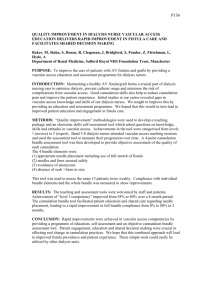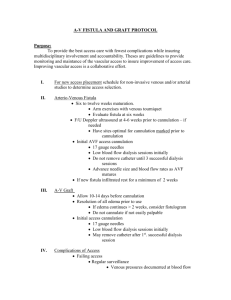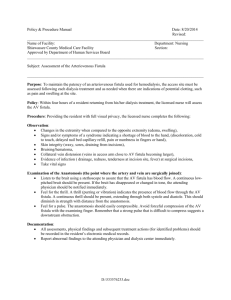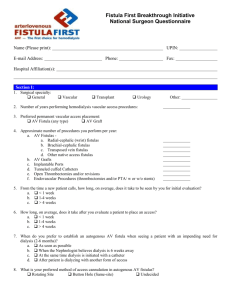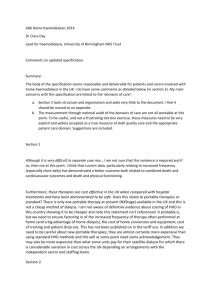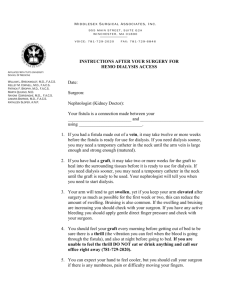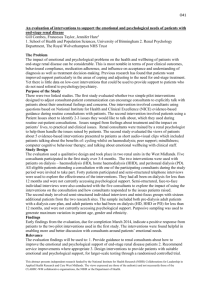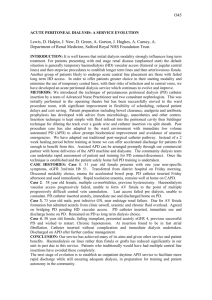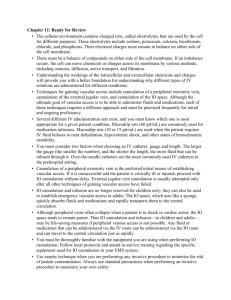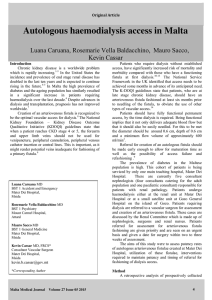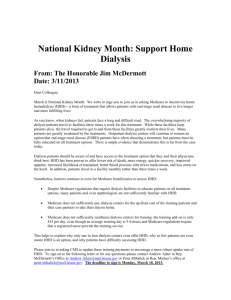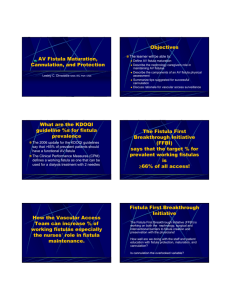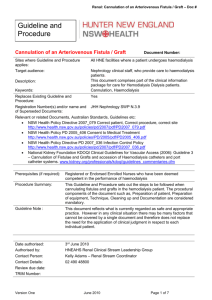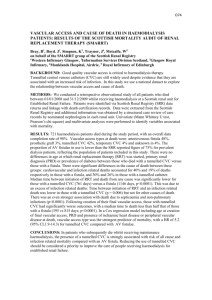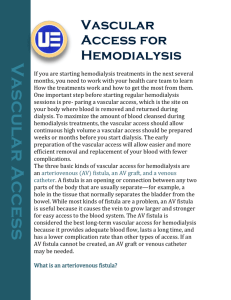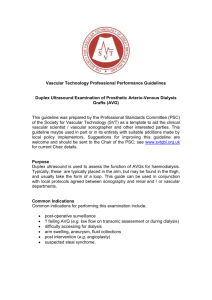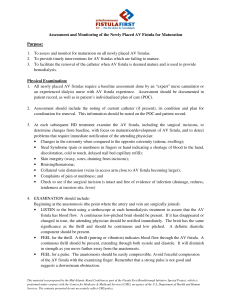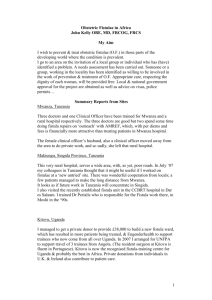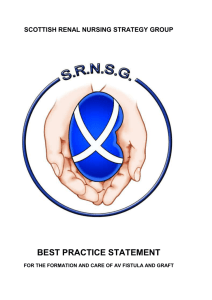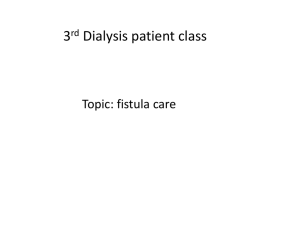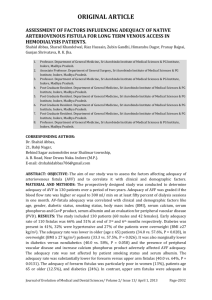Does frequent cannulation of arterio
advertisement
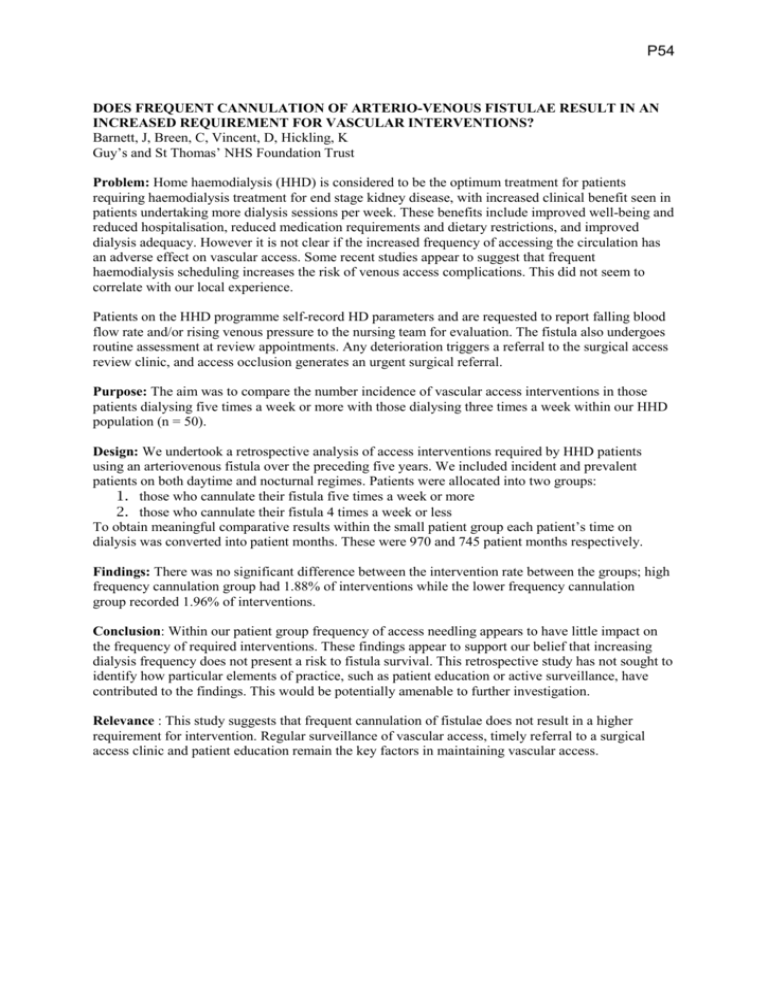
P54 DOES FREQUENT CANNULATION OF ARTERIO-VENOUS FISTULAE RESULT IN AN INCREASED REQUIREMENT FOR VASCULAR INTERVENTIONS? Barnett, J, Breen, C, Vincent, D, Hickling, K Guy’s and St Thomas’ NHS Foundation Trust Problem: Home haemodialysis (HHD) is considered to be the optimum treatment for patients requiring haemodialysis treatment for end stage kidney disease, with increased clinical benefit seen in patients undertaking more dialysis sessions per week. These benefits include improved well-being and reduced hospitalisation, reduced medication requirements and dietary restrictions, and improved dialysis adequacy. However it is not clear if the increased frequency of accessing the circulation has an adverse effect on vascular access. Some recent studies appear to suggest that frequent haemodialysis scheduling increases the risk of venous access complications. This did not seem to correlate with our local experience. Patients on the HHD programme self-record HD parameters and are requested to report falling blood flow rate and/or rising venous pressure to the nursing team for evaluation. The fistula also undergoes routine assessment at review appointments. Any deterioration triggers a referral to the surgical access review clinic, and access occlusion generates an urgent surgical referral. Purpose: The aim was to compare the number incidence of vascular access interventions in those patients dialysing five times a week or more with those dialysing three times a week within our HHD population (n = 50). Design: We undertook a retrospective analysis of access interventions required by HHD patients using an arteriovenous fistula over the preceding five years. We included incident and prevalent patients on both daytime and nocturnal regimes. Patients were allocated into two groups: 1. those who cannulate their fistula five times a week or more 2. those who cannulate their fistula 4 times a week or less To obtain meaningful comparative results within the small patient group each patient’s time on dialysis was converted into patient months. These were 970 and 745 patient months respectively. Findings: There was no significant difference between the intervention rate between the groups; high frequency cannulation group had 1.88% of interventions while the lower frequency cannulation group recorded 1.96% of interventions. Conclusion: Within our patient group frequency of access needling appears to have little impact on the frequency of required interventions. These findings appear to support our belief that increasing dialysis frequency does not present a risk to fistula survival. This retrospective study has not sought to identify how particular elements of practice, such as patient education or active surveillance, have contributed to the findings. This would be potentially amenable to further investigation. Relevance : This study suggests that frequent cannulation of fistulae does not result in a higher requirement for intervention. Regular surveillance of vascular access, timely referral to a surgical access clinic and patient education remain the key factors in maintaining vascular access.
